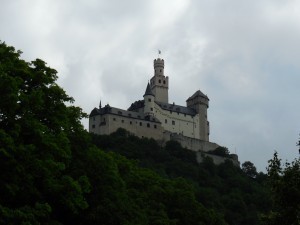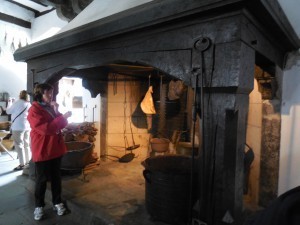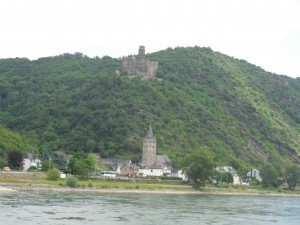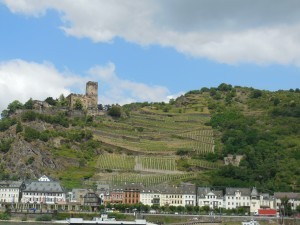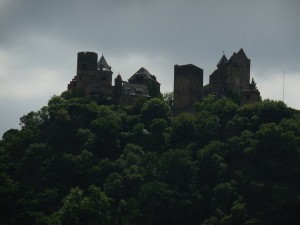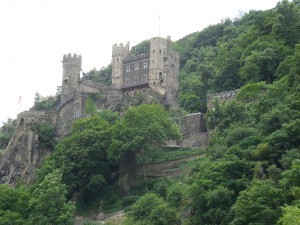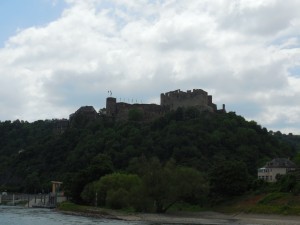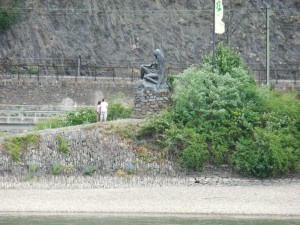MYSTERY OF THE RHINE #3 – SOLVED!
Susan Vaughan here. This post will complete my summer vacation travelogue of Rhine mysteries. Why are there so many castles along the Rhine?
The morning of day four of our river journey, we went to Braubach and toured Marksburg Castle, the only Medieval castle on the Rhine to have survived intact. The oldest section, the inner keep, dates from about 1200. The great hall and the kitchen contain some of the original furnishings.
In the afternoon, we cruised on upriver. Seen from a cruise ship’s deck, the Middle Rhine seems like a journey through history.
In rapid succession, we gawped at a pageant of vineyards, walled towns, and hills topped with castles.
The ship’s program director announced their names, along with tidbits of history. Even though I still have the map and my photos, I cannot say for sure which castle is which. Ones I remember were the Sterrenberg and Liebenstein castles, owned by brothers who hated each other, so the pair were called the Hostile Brothers.
Thurnburg, or Burg Maus (Mouse Castle), gets its nickname for its diminutive size compared to Neu-Katzenelnbogen, or Burg Katz (Cat Castle). I can’t guarantee my photos match those names. Most of the many castles we saw were ruins, some only a tower and others a few walls.
Centuries of European wars and wars between rival nobles burned the wood and tumbled the stone. My binoculars picked out some potted geraniums and patio umbrellas, where enterprising contemporary owners had turned semi-ruins into B&Bs or restaurants.
The Lorelei is not a castle, but a fabled cliff which towers over a bend in the river, narrow at this point to 350 feet. Tricky currents and rocks spelled disaster to many ships and inspired German poets to invent the “Legend of the Lorelei,” which told of a beautiful girl whose seductive song lured mariners to their doom. A statue of her commemorates the legend.
So why all these castles, which by my count number at least 20 in about 40 miles? Kings had their royal palaces, but many other nobles built castles and fortresses along the Rhine in order to defend their lands and enrich themselves. Along this narrow stretch of river, with steep hillsides blocking the wind, ships often couldn’t sail without help from land—animals pulling them along on tow paths. Knights and barons could fire cannons down on ships and demand taxes or cargo for safe passage. The origin of the term “robber baron.” So there you have the answer.
*** My newest release is a box set of the Task Force Eagle trilogy for your Kindle, price reduced August 26-30. You can find excerpts and buy links at www.susanvaughan.com.
Lea Wait's Blog
- Lea Wait's profile
- 509 followers


